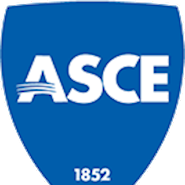Russel Halvor Wyer, an industrial engineer who worked on hazardous site projects for the U.S. Environmental Protection Agency and on water control projects for Bechtel Corp., has died.
Wyer, P.E., M.ASCE, was a life member of ASCE. On graduating from the University of California, Berkeley in 1959 with a civil and environmental engineering degree, he received a commission in the U.S. Public Health Service and was stationed in South Dakota to work on the Sioux Indian reservations. After two years he was reassigned to Kansas City to work on water pollution control.
He earned a California professional engineers license, then moved his family to Charlottesville, Virginia, where he worked on water pollution projects in the mid-Atlantic states. When the EPA was launched, the family moved to Northern Virginia. Among his most interesting assignments were serving as part of a U.S. delegation that traveled to the USSR to establish a research program with the Soviets on marine pollution.
Wyer participated in many international meetings, most in London, to develop rules for the incineration of waste at sea. He was the EPA project manager assigned to work with the U.S. Air Force to incinerate 2 million gallons of the weaponized herbicide Agent Orange at a remote location in the Pacific Ocean. He also spent a number of years managing the Superfund hazardous site cleanup program.
In 1987, he was selected to participate in the President's Executive Exchange program, which meant working in the private sector for one year. The program included a trip to five European countries and Russia to meet with government officials and discuss their major management issues. The program concluded with a handshake and photo with President Ronald Reagan. Then Wyer returned to the EPA to again focus on industrial waste management.
When he left EPA it was to join Bechtel in San Francisco, where he became project manager on a state water control project in the East Bay area.
In 1944 Bechtel won a cleanup contract at the Department of Energy’s Hanford site, and the family moved to Richland, Washington. Hanford was where 177 aging underground tanks stored waste from as far back as World War II when the site was established as part of the Manhattan Project. Wyer’s work involved repelling the threat of leakage into the Columbia River.
Wyer had many hobbies – fishing, woodworking, target shooting, even 3D printing. He was a member of the Richland Rod & Gun Club, serving on their board of directors for many years, developing two club websites, and a data management program.



